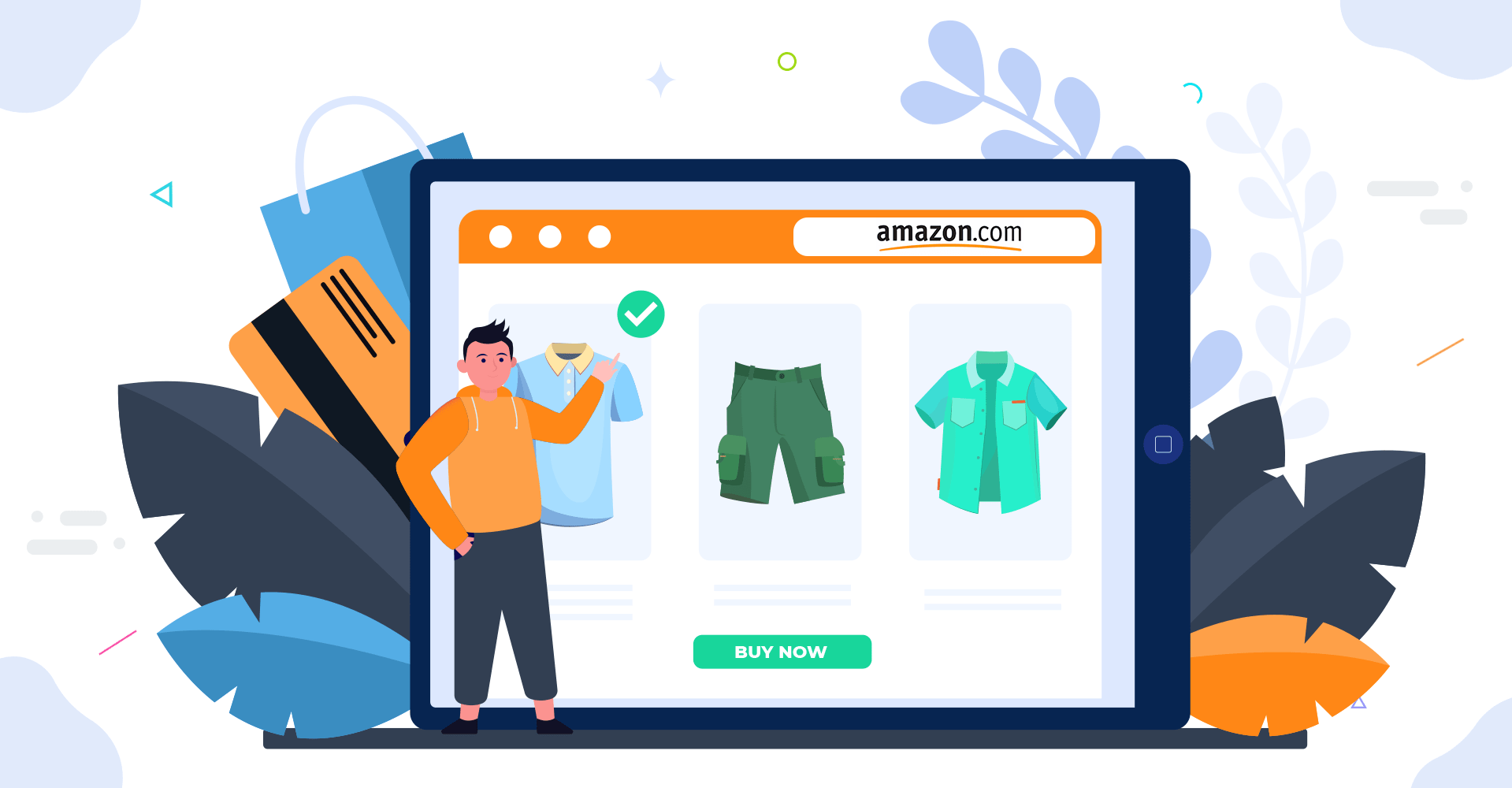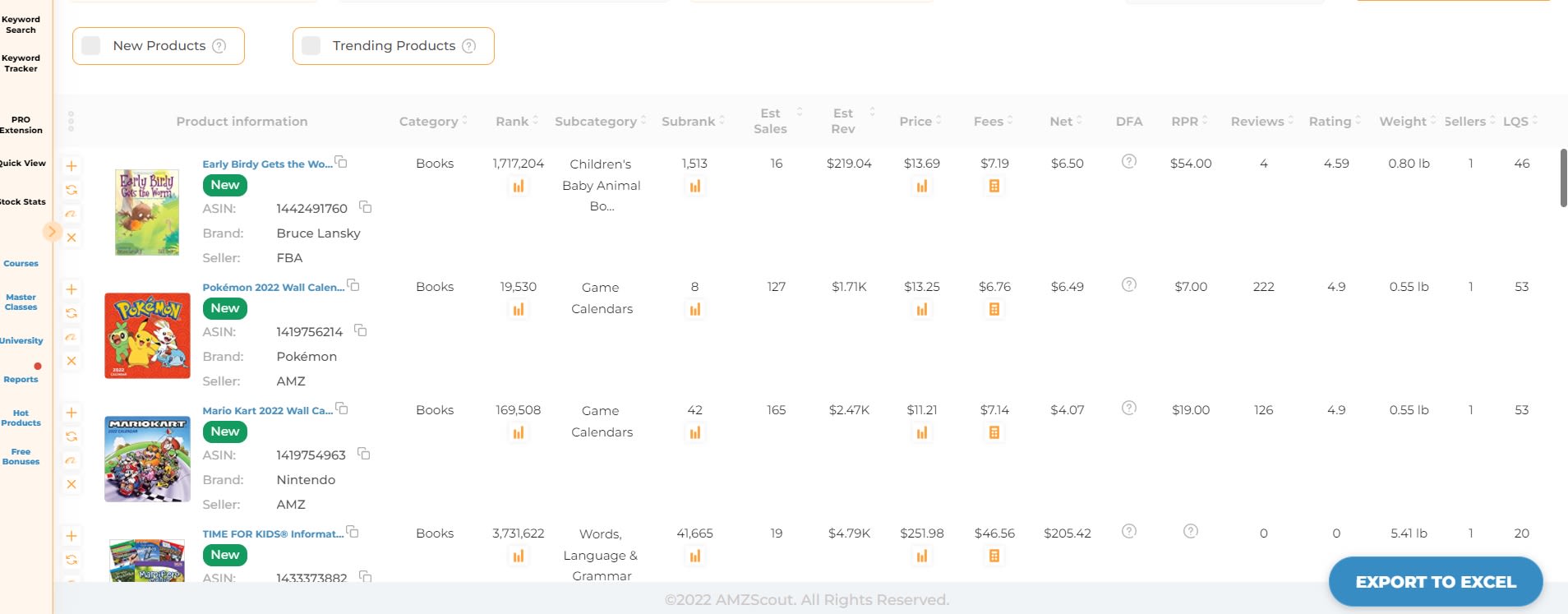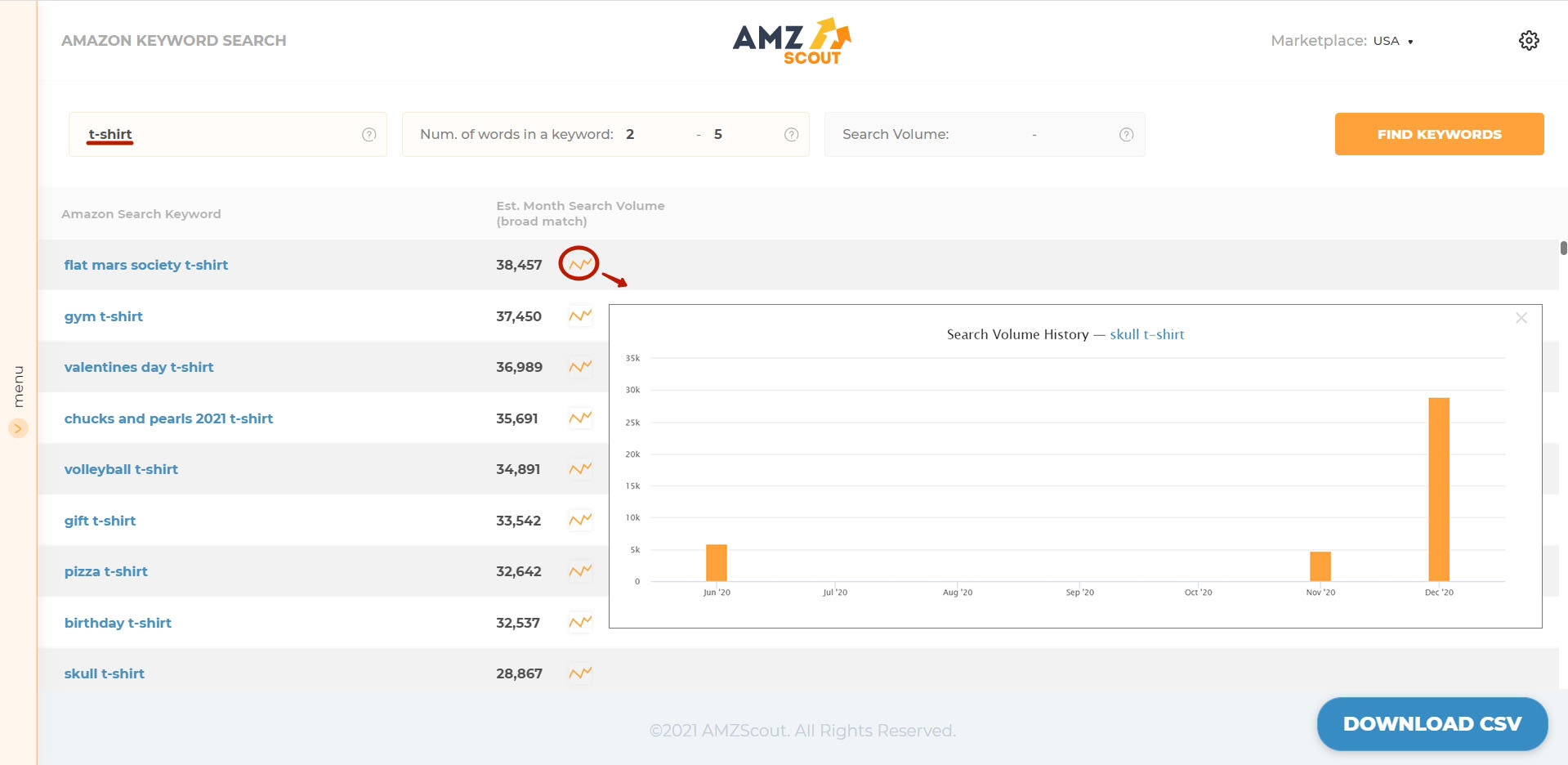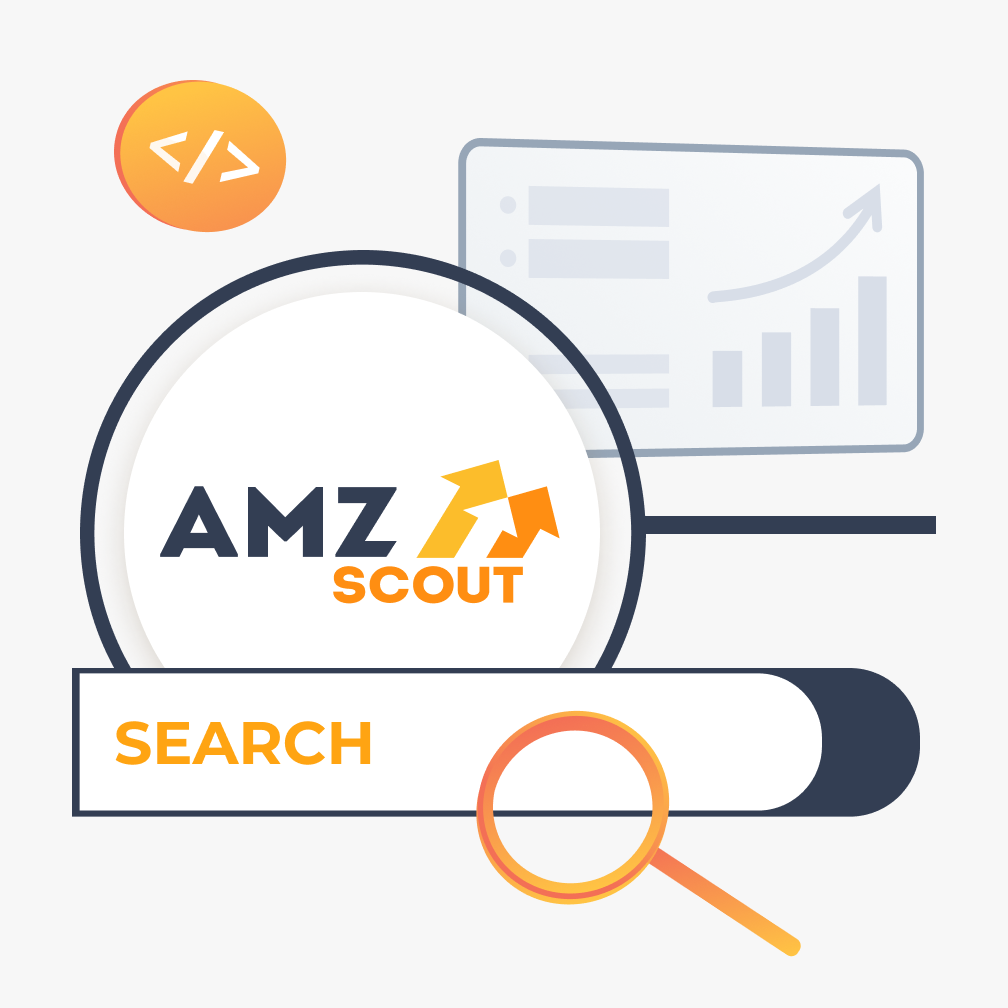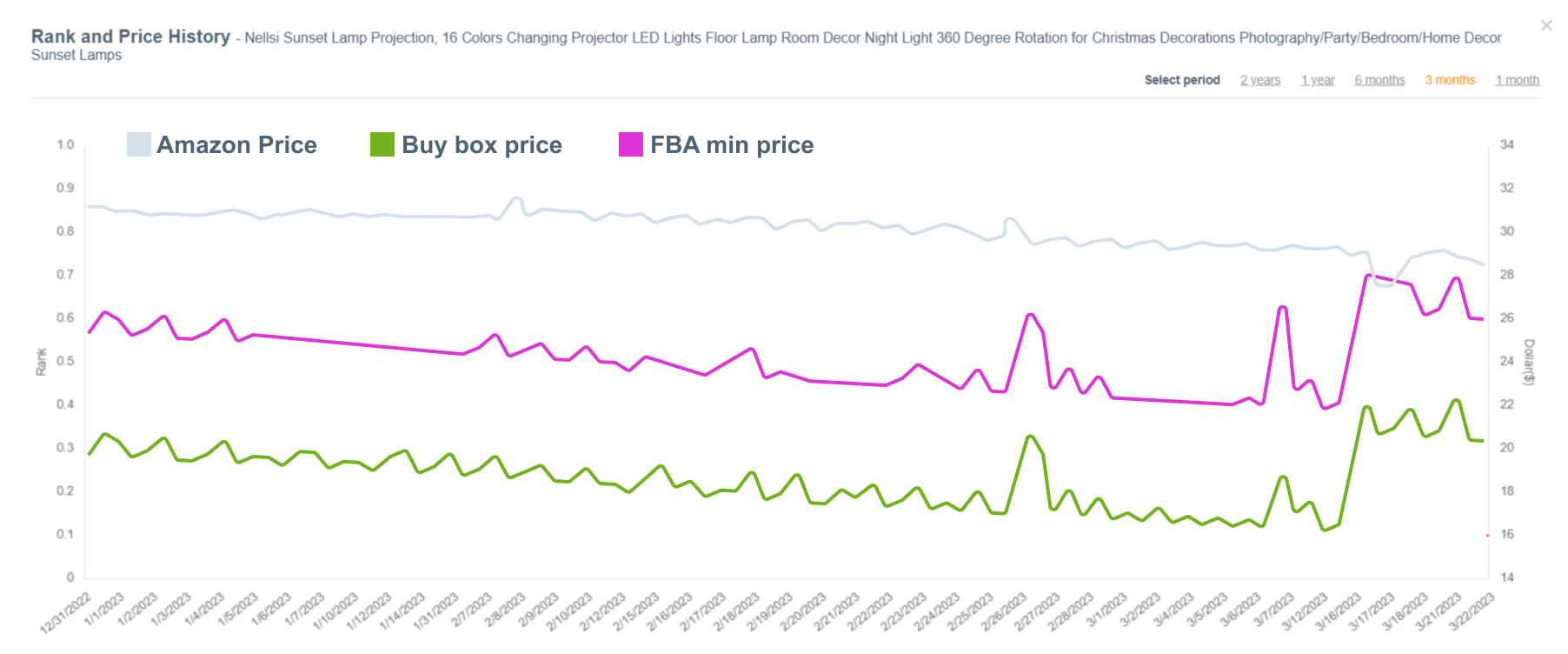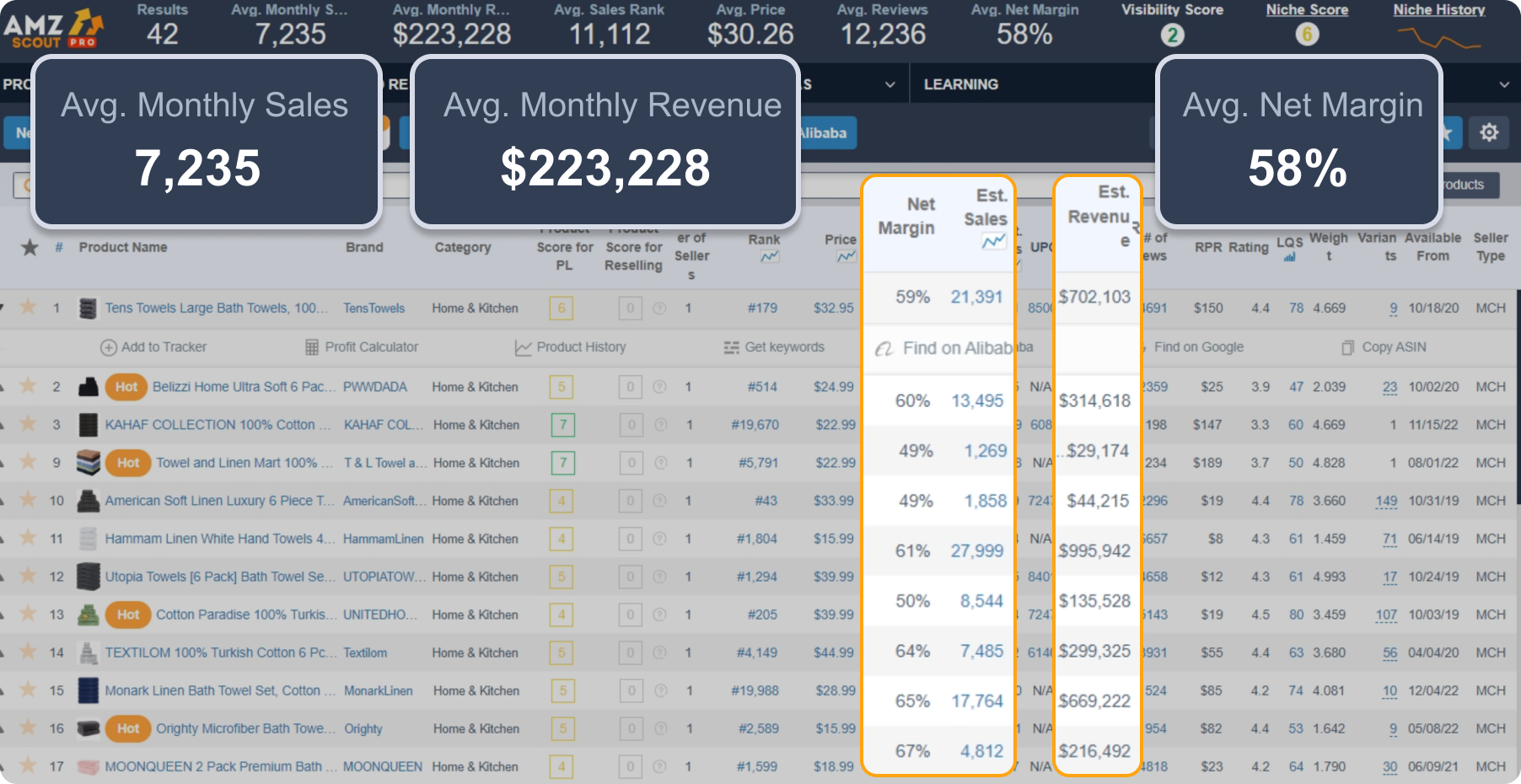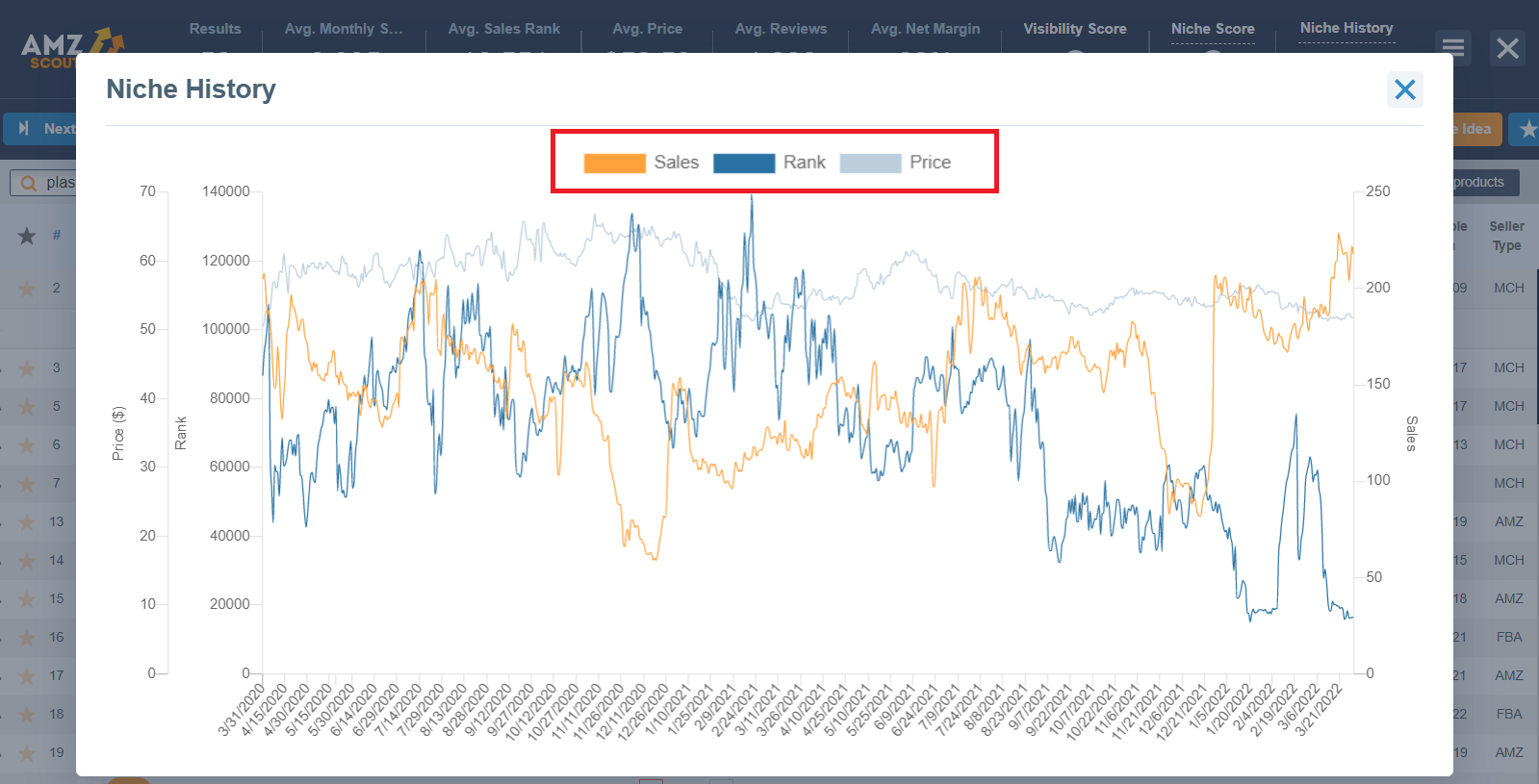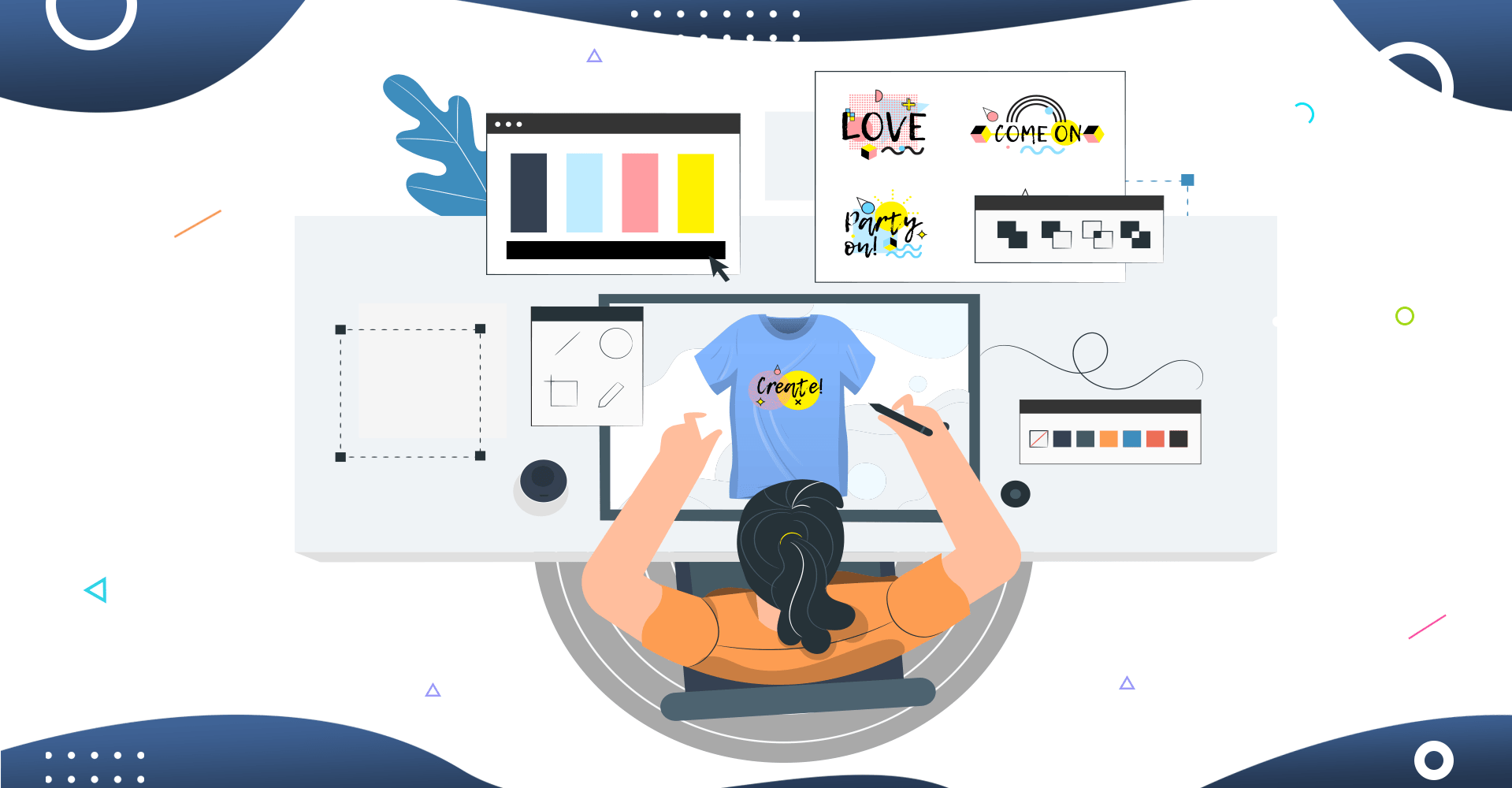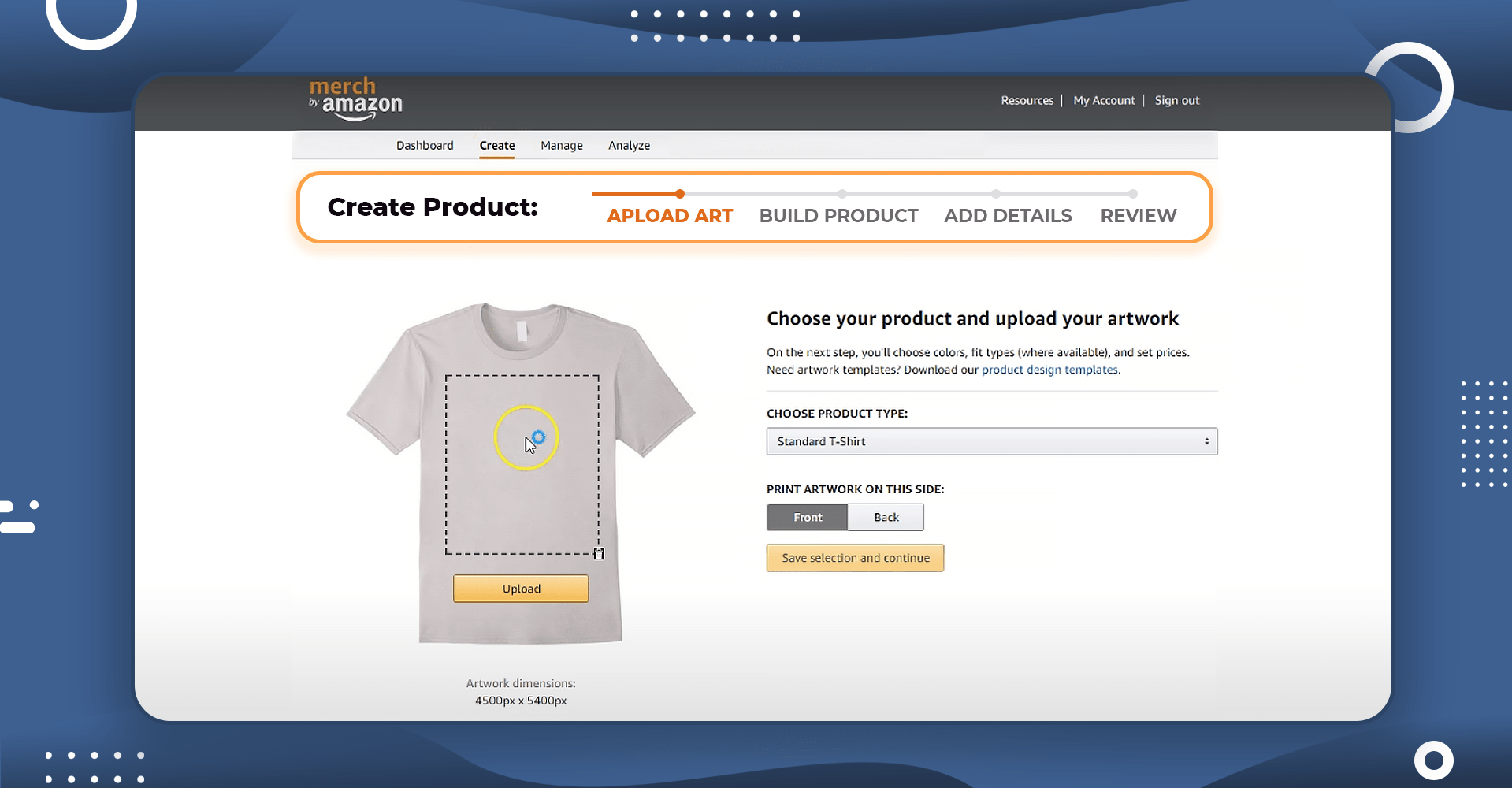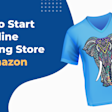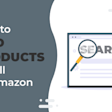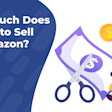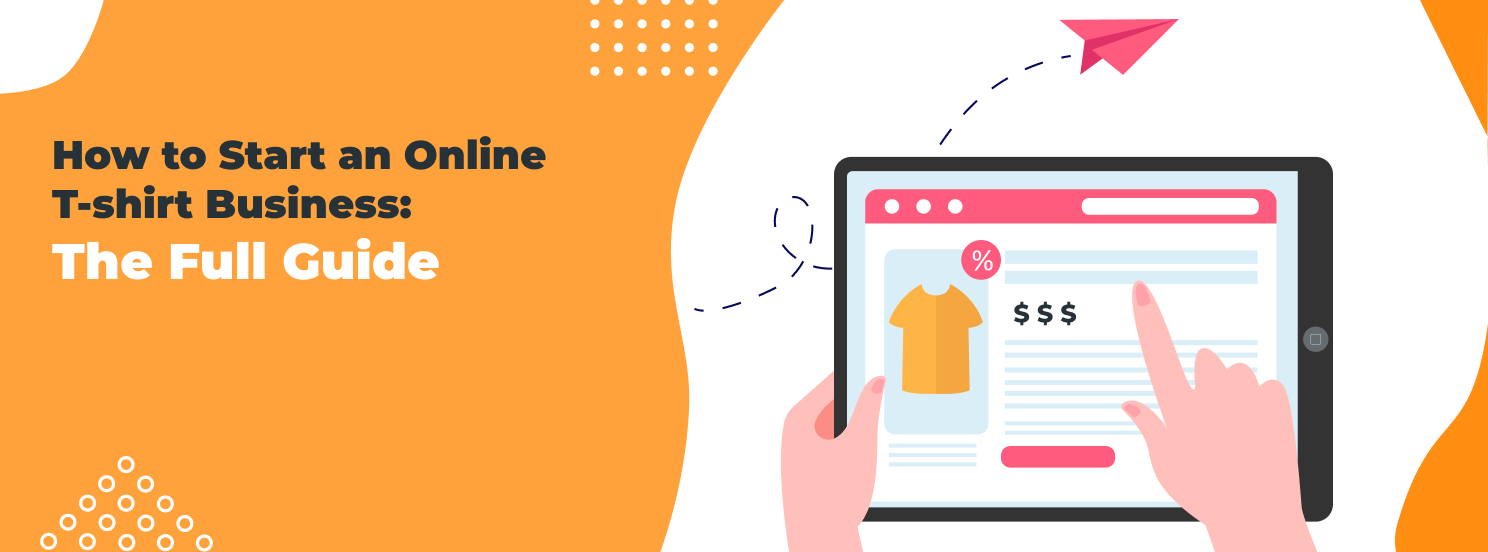
How to Start an Online T-shirt Business: The Full Guide
Are you thinking about starting a t-shirt business? Casual apparel like t-shirts are one of the best products for sellers that are new to eCommerce. In this guide, you’ll learn how to start a t-shirt business from start to finish, including how to sell using different business models.
Table of contents
- Step 1: Choose A Business Model
- Step 2: Choose Your Selling Platform
- Step 3: Find a Niche
- Step 4: Create Your T-Shirt Design
- Step 5: Test Your T-shirt Niche Ideas
- Step 6: Source Your T-shirts
- Step 7: Print Your Design
- Step 8: Add Your Product to Amazon (for those selling on Amazon)
- Step 9: Create Listings and Product Pages
- Step 10: Promote Your Products
Step 1: Choose A Business Model
The first step in launching your t-shirt start up is to choose your business model. This will determine how you source and print your designs and which online platform you’ll sell from. Here are the most business models for t-shirt companies:
Print Designs Yourself
The first small business model for your t-shirt company is to print the t-shirt designs yourself. This model requires you to create your design ideas and get the necessary equipment to print the graphics onto the apparel.
You may not think this will work but there are many success stories of people printing t-shirts on their own. Printing your own designs is flexible as you can choose to print the products in advance, or wait until an order from a customer.
Dropshipping
Dropshipping is a business model where you have suppliers ship products directly to customers. This saves you the upfront cost of having to pay for products before selling them. However, this also means that you need to use the designs available from the supplier instead of your own.
Print on demand
Print on demand is a business model where you partner with a t-shirt company that prints and ships your t-shirts after each customer order. It’s similar to dropshipping in that you don’t have to pay for products upfront. However, it differs in that you must create the custom designs for the POD supplier to print on the shirts. This gives you the best of both worlds as you get unique products and a low-cost launch.
Another benefit of using print on demand is the ability to offer personalized designs. Because products aren’t printed in advance, you can allow customers to provide their own customized designs, which you have printed and sent their way. For instance, you could let customers give you names which are then used for custom t-shirts.
Some POD suppliers simply give you the tools to create mockups for your designs. Others have their own platform selling your shirts. One of the most popular examples is Merch by Amazon. This POD service run by Amazon, allows you to create mockups for your designs which are then displayed in Amazon product listings. When a customer places an order, Merch by Amazon will print and ship the product.
Note: Another business model is to work with a clothing manufacturer to produce apparel with your designs. With this model, you need to buy your t-shirts in bulk before you can sell them. This typically isn’t the best option for new business owners so we won’t focus on it in this guide.
Step 2: Choose Your Selling Platform
The next step in launching your t-shirt business is to choose your selling platform. The best platform will depend on your business model. Below, are the most common options:
eCommerce Websites
The first option is to sell your shirts on your own website. Having your own site is great for establishing your own brand. However, it means you’ll need to attract all of your visitors yourself as a new site doesn’t have an existing audience. With your own site, you’ll use an eCommerce platform like Shopify to list products, design pages, and process transactions.
Online Marketplaces
Online marketplaces enable third-party sellers to list and sell on the platform. Common examples are Amazon, eBay, and Etsy. When you sell on an online market, you get the benefit of a built-in audience. This means you can get free traffic to your products. But, it also means competing with other sellers.
Print on Demand Marketplaces
Lastly, you can sell your shirts directly through the platform you use for on-demand printing. As previously stated, some POD platforms have a marketplace where shoppers can browse and buy t-shirts from creators. A common example is Teespring.
Merch by Amazon is another. However, this POD market stands out from the rest. This is because your products are listed on Amazon, the most popular marketplace in the world.
Step 3: Find a Niche
After you get the essentials of your business plan squared away, it’s time to decide what style of shirt to sell. Like any type of business, there needs to be a demand for the types of shirts you sell if you want to be profitable.
In this section, we’ll outline what to look for in potential niches and how you can find the best opportunities.
1. Product Criteria
Before you search for high quality t-shirt niches, you need to know what makes a winning product. The exact criteria will depend on your business model. Below we will analyze the important product criteria for each model.
Note: in this analysis we are using sales metrics from the Amazon marketplace. These metrics will help you gain a clear understanding of a product’s potential, even if you plan to sell on another platform.
Self-printing
When you print your own designs, the most important criteria center around sales and profitability. Competition is important, but having unique designs means you won’t have to worry about anyone selling an identical product. Here are the key criteria to look for:
Profit Margin: Check for niches with a minimum profit margin of 50%.
Sales: Look for products with over 500 average monthly sales.
Sales price: T-shirts can range wildly in price. Look for designs with sales prices over $15 but under $30.
Dropshipping
With dropshipping, you should look for the same sales, price, and margin criteria as self-printing. However, because you’ll be selling designs that are not your own, there are also important competition metrics to evaluate. This includes:
Number of other sellers: Look for products where there are between 2 and 20 other sellers. Any more than this will lead to high competition.
Seller type: Avoid products with Amazon sellers. It’s hard to compete with them when dropshipping products.
Prime Delivery: Dropshipping has slower shipping times. So, it’s best to avoid items with 2-day Prime Delivery.
POD platforms
When you sell through a POD program like Merch by Amazon, high sales are your most important product criterion. Product margins aren’t applicable as there are no real product costs or fees. Plus, you don’t receive the revenue per sale. Instead, you receive a flat rate royalty based on the price of the item.
These royalties are generally lower than the profit margin you would get had you printed and sold the item yourself at the same price, making high sales volumes even more important. You should look for products with over 1,000 average monthly sales.
2. Where to Find Niche Ideas
Now that you know what to look for based on your business model, let’s examine some of the ways you can find niches that meet these criteria. There are several approaches. Most require a helpful research tool that you can use to review key data for different niches.
1. Search by Product Criteria Using the AMZScout Product Database
The AMZScout Product Database contains data for hundreds of millions of Amazon products. You can search this database using different product criteria as filters to quickly discover items that match your desired traits. Even if you don’t sell on Amazon, this information is helpful. Trends on Amazon are usually consistent across the eCommerce market as a whole.
To use the tool, you first need to go to AMZScout and log in to your account. If you’re new, you can enroll in a free trial to get access to the tools. Once you’re on the platform, you’ll select Product Database from the left-hand menu.
2. Find Keyword Ideas Using the Keyword Search Tool
Another way to find ideas for niches is to analyze what customers are searching for. With the AMZScout Keyword Search tool, you can enter a search phrase to get a list of related keywords used by Amazon customers. The tool shows the monthly search volume for each term so you can see which product ideas have the best potential.
3. Social media
You can also find new ideas on social media. Pinterest is the best social platform for finding design ideas as users often post and share images related to the things they’re interested in. Other useful platforms for finding good t-shirt niches are Instagram and TikTok.
3. Reviewing Your Niche ideas
Here is how you can use the various tools to check for the product criteria mentioned at the beginning of this section.
1. AMZScout Online Arbitrage and Dropshipping Extension
The Online Arbitrage & Dropshipping Extension shows you key information for evaluating the potential of dropshipping products. With it, you can see the number of sellers for an item and if it is a private label or in a restricted category. The tool also has a Buy Box history showing how the product’s Buy Box price has changed over time. This information helps Amazon sellers know how low they’ll need to price their offering.
2. AMZScout PRO Extension
The AMZScout PRO Extension is another helpful tool that lets you analyze key product data directly from Amazon. Upon downloading the extension, a new button will appear on Amazon pages for you to analyze that niche. When you open the tool, it will show a list of products (similar to the Database) along with metrics such as price, estimated sales, seller type, number of other sellers, and net margin.
In addition to helping you analyze individual products, the extension also provides average metrics for the niche, allowing you to evaluate the category as a whole.
Step 4: Create Your T-Shirt Design
Once you finalize your t-shirt niche, you’ll then need to create your t-shirt designs. How you’ll go about this will depend on your creative skills. If you happen to have design skills, you can get to work on creating concepts for your designs. If not, you’ll need to find a professional to create the designs for you.
Many new t-shirt companies choose to work with freelance graphic design artists to come up with their designs. The upfront is usually pretty low (a couple of hundred dollars for a set of designs) and you get a high-quality concept.
Note, if you use dropshipping, this step is unnecessary as you’ll be selling shirts from a supplier instead of creating your own designs.
Step 5: Test Your T-shirt Niche Ideas
Next, you’ll want to test your design concepts to see if they resonate with your audience. This can help validate your ideas before listing your products.
If you have a designer create the graphics for your shirts, make sure they include a mockup with the design on the apparel. You can then post this mockup on Pinterest and other social media platforms to see what people think. A positive response from your audience is a good sign that the niche will work well.
If you're dropshipping your shirts, you’ll want to get the product images from your supplier and repeat the sharing process on social media.
Step 6: Source Your T-shirts
The next step is to source your t-shirts. Where you’ll go to find a supplier will depend on your business model.
If you plan to print your own designs, you’ll need a supplier with plain shirts. This makes the process simpler as you can focus solely on the price and quality of the apparel and not the design.
One of the best places to find a clothing supplier is Alibaba. The eCommerce site has many manufacturers and suppliers for every type of product and you can use the online platform to manage your transactions and communications. The search function makes it easy to find specific types of products and there’s a mix of both cheap and high-quality items.
When you find a potential supplier, be sure to review their profile cards to see how long they’ve been in business, what certificates they have, their Store score, and their on-time delivery rate. You then want to order sample shirts for the items you’re interested in. After you get the sample and verify its quality, you can place a bulk order.
If you use dropshipping you’ll need to find suppliers that offer dropshipping as a delivery method. One place to find them is AliExpress, the sister site of Alibaba. It also has countless suppliers across categories, including t-shirts. With dropshipping, you won’t buy your shirts in bulk, but you still want to order a sample to confirm that the product matches the description.
If you sell through Merch by Amazon or another POD platform, this step isn’t applicable as they will be responsible for the physical apparel.
Step 7: Print Your Design
If you’re printing your designs, this is when it will happen. To start, you’ll need to choose your printing method. Your options are:
Screen printing: Prints graphics on a t-shirt by using thick inks that lay on top.
Vinyl graphics: Graphics are created through transfer printing.
Direct to garment: This method sprays ink onto the garment like inkjet printing.
After you decide on your printing method, you’ll need to acquire the appropriate machine and supplies. Many equipment manufacturers offer starter kits for those new to printing. When you have everything you need, you can print a test run to make sure that your logo and graphics look as designed.
Step 8: Add Your Product to Amazon (for those selling on Amazon)
Next, for those selling on Amazon, you’ll need to add your products to the marketplace. How you do this will depend on your sales method.
If you print your own shirts, you will need to go to the Amazon catalog from your Seller Central account and add a new product for each item. If dropshipping, the item may already be on Amazon. In which case, you won’t need to add the catalog entry. Instead, you’ll go to the catalog page for the existing item and select Sell This Product to create your offer.
If you’re selling through Merch By Amazon, this is when you’ll enroll in the program. You’ll need to provide basic business and personal information and request an invitation. When you’re approved, you’ll add products by uploading your designs to the MBA platform.
Step 9: Create Listings and Product Pages
Now, you’ll have to create the listing pages for each of the shirts. If you’re dropshipping a product already on Amazon, you won’t need to create a listing as there is only one listing per product.
If you self-printed the designs, you can modify a listing by going to Manage Inventory and selecting Edit next to the desired product. There you’ll be able to add a description, bullet points, title, specifications, and their vital information.
You can enhance your listings even more by using A+ content, extra graphics, and modules that replace the regular description. To use this feature, you need to have your brand enrolled in the Amazon Brand Registry.
If you’re in Merch by Amazon, the process for creating listings is a little different. When you upload your designs, Amazon will let you choose which types of apparel to create products for. You can also choose which colors to offer.
For each type of garment (t-shirt, v-neck shirt, etc.) you’ll add a brand, design, title, key product features, description, and price. After you save the details, Amazon publishes your products, creating listings using your product details.
Step 10: Promote Your Products
Finally, you’ll need to promote your t-shirts. Having great designs won’t do much good if no one knows about them. This is why you need to market your products to get them in front of your target buyer.
If you sell on Amazon, the best way to do this is through Amazon Ads. With a Sponsored Products campaign, your t-shirts will appear at the top of search results and the bottom of the other product pages. You’ll have to pay for each person that clicks your ad, but you can quickly get people to your listing.
Amazon Ads will work well for all business models. However, be aware that ad campaigns for dropshipping products may yield less profit. You’ll have less control over how you price your shirts and will have to compete with other sellers for ads, increasing their cost.
If you sell on your eCommerce website advertising is still one of the best ways to get t-shirt sales. You can advertise through a search engine like Google as well as social media platforms like Instagram, Facebook, and Pinterest.
Conclusion
Selling t-shirts is a great way to get into online business. Print-on-demand services and dropshipping suppliers allow you to get started with a high-quality product with a little upfront cost. The key to success lies in finding a niche for your brand and pricing your product competitively. The steps in this guide will help you do that.


